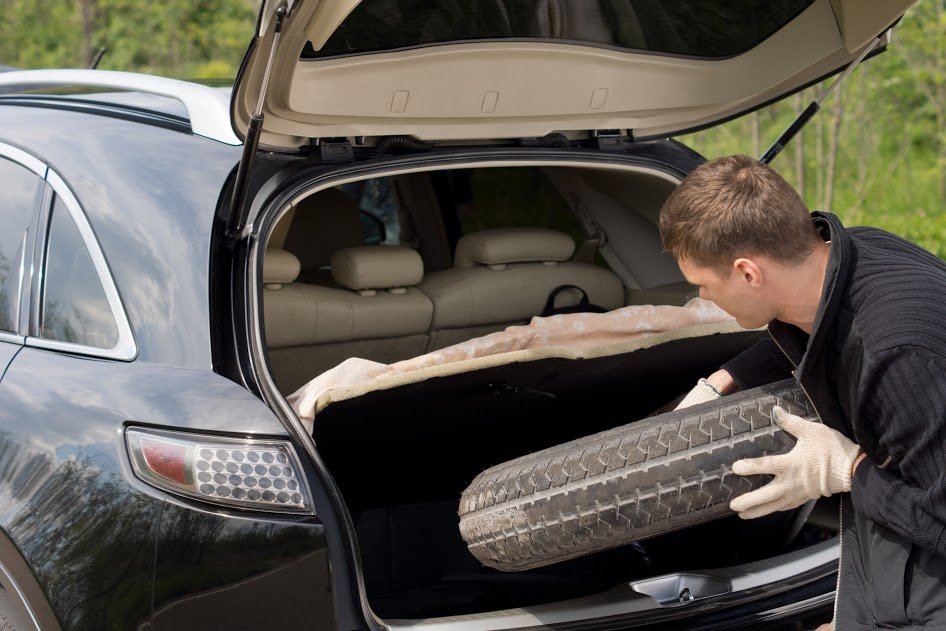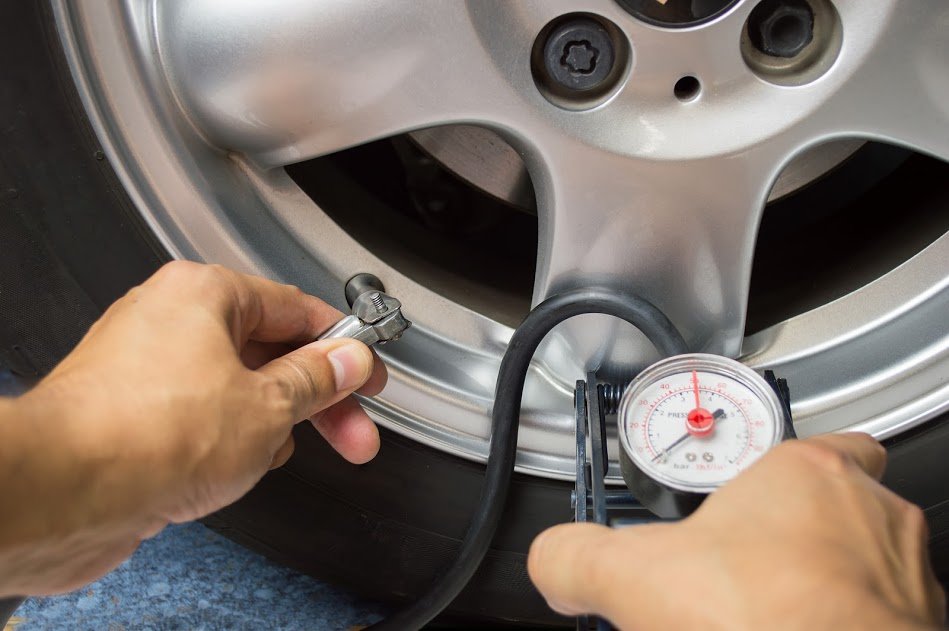
These days, car manufacturers are not required to include a spare tire with a purchase of a new vehicle. Many cars aren’t large enough to carry a full-sized spare mounted in the trunk, so smaller, temporary spare tires, or “donuts,” are much more common. Knowing what your vehicle has in case of an emergency is important, as is the maintenance of a spare tire. These facts about spare tires will help make sure you have what you need in case of an emergency.
Compact Spare Tires

A compact spare tire or “donut” is the most common type of spare tire and the kind that is usually included with your car. It fits into the base of the trunk, already mounted and inflated, on a small-diameter wheel. The compact spare corresponds to the specifications of your vehicle, but since they are lightweight and have less tread, these are only used in temporary emergency situations. It is recommended that you drive straight to a mechanic to have a proper replacement put on.
Driving Distance and Speed Limitations
If you have changed a flat tire to a compact spare, try not to drive any farther than 50 miles. In terms of speed, 50 miles per hour is the suggested maximum. This means no high-speed expressway driving; drive only on municipal roads where you do not need to exceed past the recommended speed. Driving over that limit or past the suggested distance can put stress on the compact tire, causing it to burst or break as well, leaving you stranded.
Drive Control Issues
Because of their small design, compact spares will also disable drive features like ABS and traction controls. The narrow tires reduce the amount of traction, which means you have to be careful not to stop too fast or take any quick, unpredictable turns and maneuvers. Note that if you are towing a trailer, you’ll have to unhitch since compact spares can’t handle the same load as regular tires. There are other mechanical issues that can occur with prolonged use, including too much stress on your car’s differential if the smaller tire replaces one on the drivetrain.
Safe Air Pressure for Compact Spares

A compact spare tire should be inflated to a pressure of 60 pounds per square inch (PSI). Pump more air into your spare if it is below this pressure. Think about keeping a small inflation device somewhere in the trunk or car storage areas, in case of emergencies. Keep in mind that a normal lifespan for any tire is six years, and a new spare should be replaced regardless of type or wear after that time.
Full-Size Matching Spare
A “full-size” spare is less common than a compact because of the amount of space it consumes in your vehicle. If you can make the room, it’s a great option if the fifth tire matches the current set of tires on your vehicle. If you’re using a full-size matching tire as your spare, remember to make it part of your vehicle’s tire rotation pattern. Another pro is you won’t have to drive to a mechanic at all if you replace with a matching full spare tire.
Full-Size Mismatching
Although a mismatched tire could be a full-size tire, it still may not be the same size as the ground tires. If you have a full-size but mismatching tire, you will be able to drive it longer than a compact or donut tire, but it will still have to be replaced by a proper matching tire and should not be included as part of your vehicle’s tire rotation pattern. This might be an okay option for a spare if you find a good deal or have an extra tire lying around, however, it may not be a smart item to purchase since it will still take up space and have to replaced sooner than a full-sized matching spare.
Full-Size Temporary Spare
The third kind of full-sized spare tire is a lighter-weight and shallow tread spare tire which should be used as a temporary tire like the compact spare. Similar to the compact, it usually matches your vehicle’s tire specifications, but since it is a full-size tire, it most likely won’t affect ABS or other drive and traction controls. The other bonus is that this kind of tire won’t add a whole lot of extra weight to your vehicle in storage. Keep in mind, however, that since it’s lighter in weight than the other tires, it is still only good for temporary uses in emergency situations and will need a quick replacement like the compact spare.
It’s always a good idea to check your car to see what kind of spare you have — or know if you have one at all. Don’t take it for granted that a new car has one, since according to AAA, 28 percent of all 2017 model year vehicles were sold without a spare. Take the time to check for the other necessary items for changing a tire as well, including a jack, lug wrench, and a vehicle owner’s manual. Those items should always be included with any car purchase, but they won’t do you any good if you don’t have a proper spare tire in tow.
Article originally on: https://www.doityourself.com/stry/5-facts-about-spare-tires